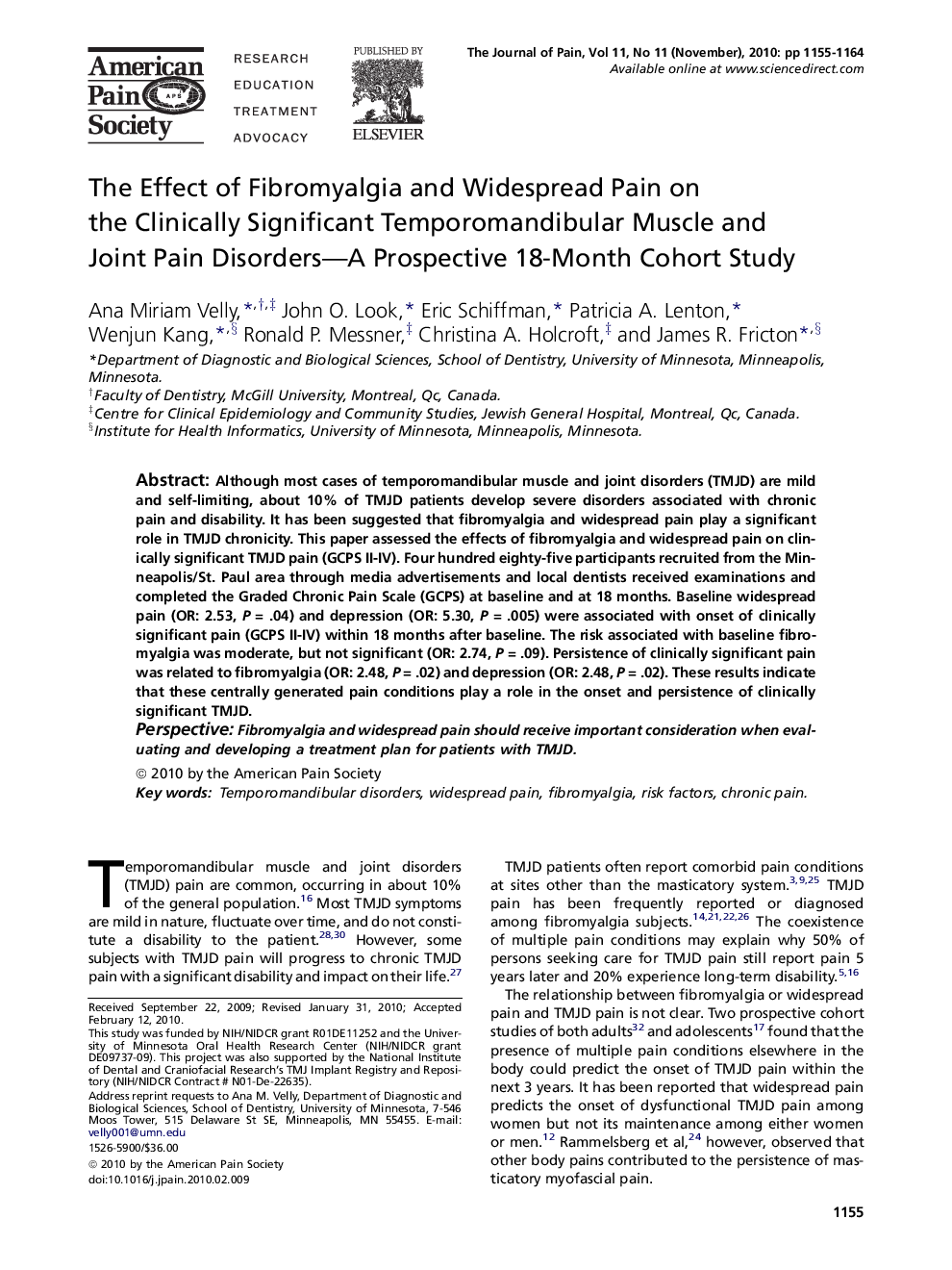| Article ID | Journal | Published Year | Pages | File Type |
|---|---|---|---|---|
| 2729436 | The Journal of Pain | 2010 | 10 Pages |
Although most cases of temporomandibular muscle and joint disorders (TMJD) are mild and self-limiting, about 10% of TMJD patients develop severe disorders associated with chronic pain and disability. It has been suggested that fibromyalgia and widespread pain play a significant role in TMJD chronicity. This paper assessed the effects of fibromyalgia and widespread pain on clinically significant TMJD pain (GCPS II-IV). Four hundred eighty-five participants recruited from the Minneapolis/St. Paul area through media advertisements and local dentists received examinations and completed the Graded Chronic Pain Scale (GCPS) at baseline and at 18 months. Baseline widespread pain (OR: 2.53, P = .04) and depression (OR: 5.30, P = .005) were associated with onset of clinically significant pain (GCPS II-IV) within 18 months after baseline. The risk associated with baseline fibromyalgia was moderate, but not significant (OR: 2.74, P = .09). Persistence of clinically significant pain was related to fibromyalgia (OR: 2.48, P = .02) and depression (OR: 2.48, P = .02). These results indicate that these centrally generated pain conditions play a role in the onset and persistence of clinically significant TMJD.PerspectiveFibromyalgia and widespread pain should receive important consideration when evaluating and developing a treatment plan for patients with TMJD.
